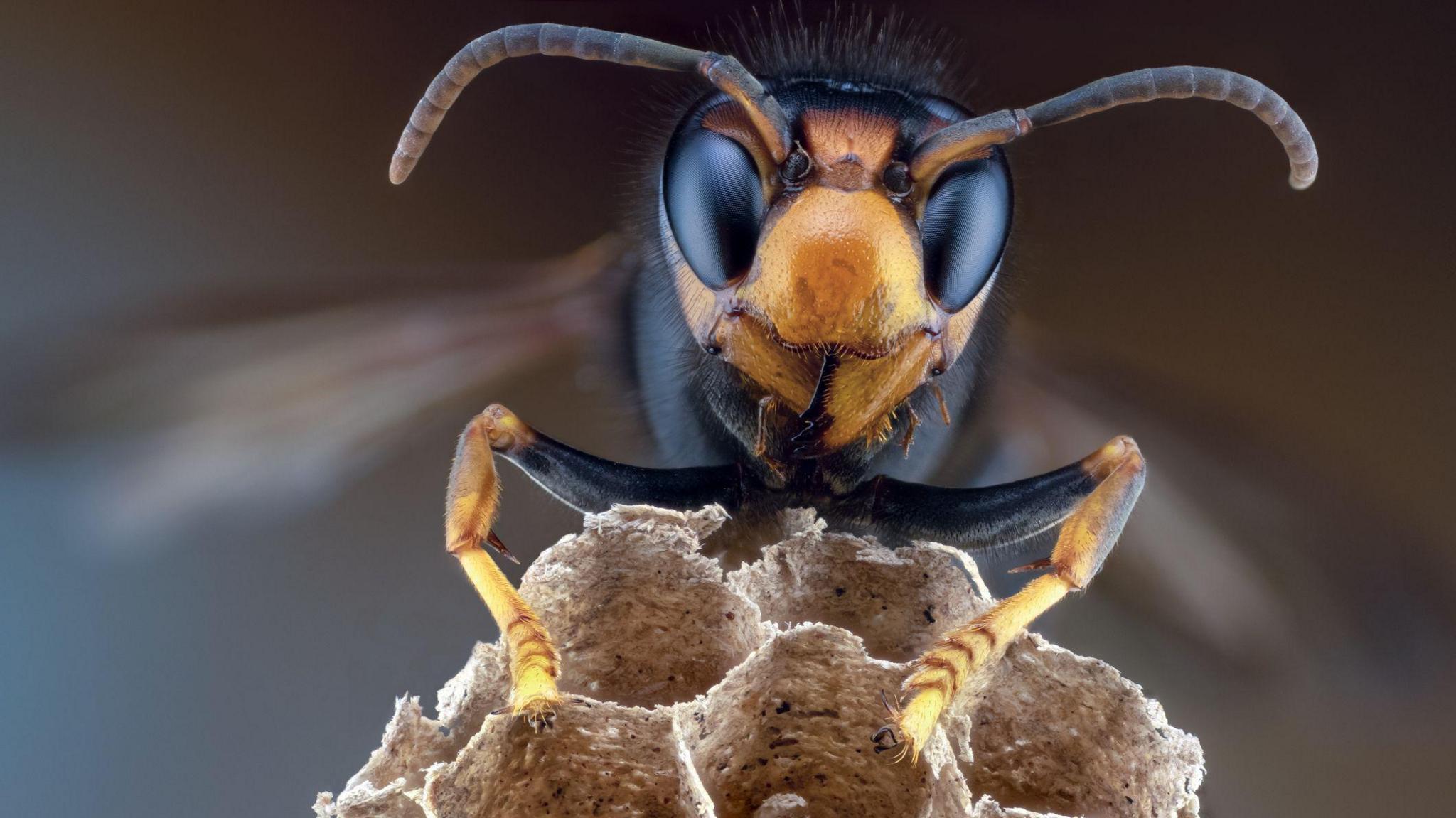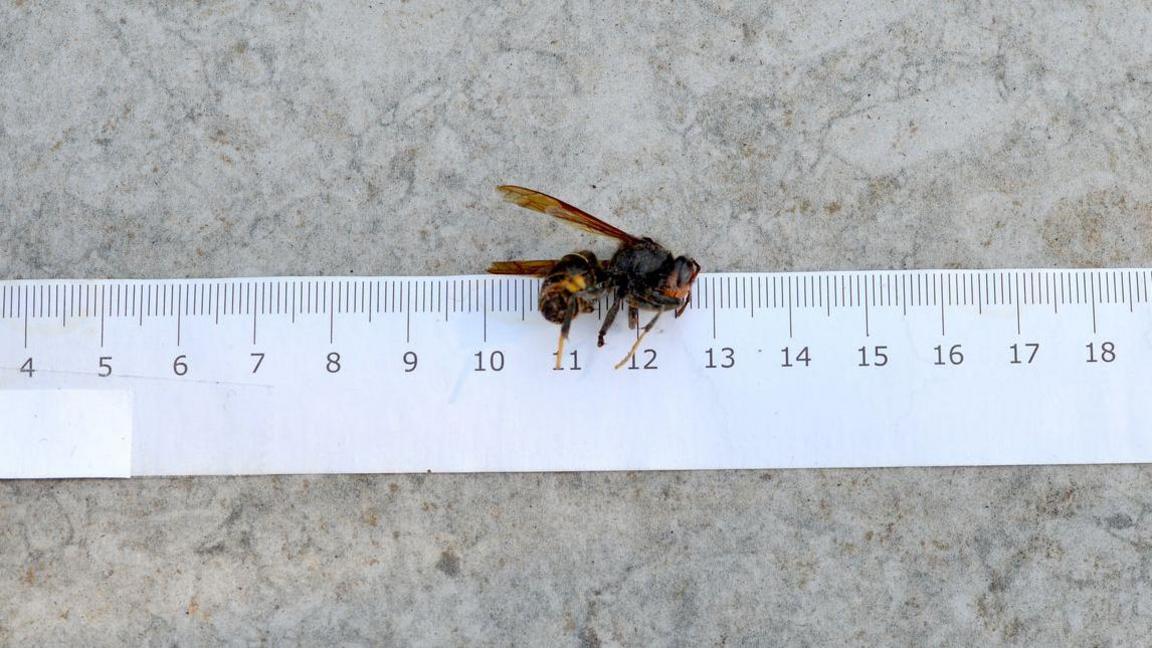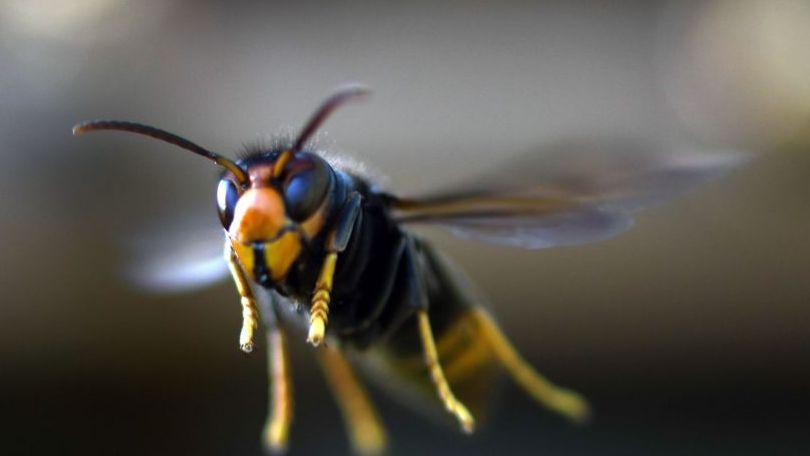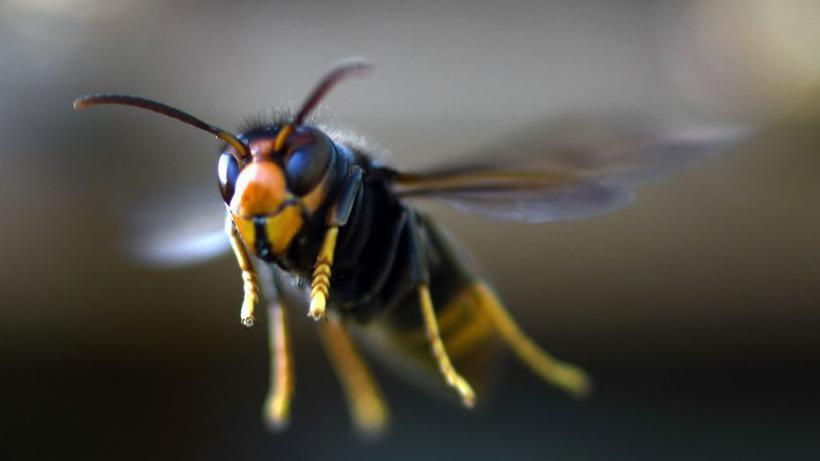Asian hornet nest located and being removed, says NIEA

The Asian hornet originated from east Asia and was first recorded in France in 2004
- Published
An Asian hornet nest has been located in Dundonald, County Down, and is in the process of being removed, the Northern Ireland Environment Agency (NIEA) has said.
The invasive species was first captured in the Dundonald area last Friday and further sightings were confirmed on Wednesday.
The NIEA said this suggested the existence of a nest. Officers have now located the nest and have made arrangements for its control and removal.
The Environment Minister Andrew Muir encouraged the public to "remain vigilant" as "there could be more out there".
Individual hornets and nests have been increasingly recorded in southern counties of England, while two nests were found and destroyed in County Cork earlier this summer.
'Taking this very seriously'
Speaking to BBC Radio Ulster's Evening Extra programme, Muir thanked members of the public who have reported sightings through the Asian hornet watch app.
"This has allowed us to have a track and trace arrangement in place to be able to pin-point the location of the nest," he said.
"It's really important we have vigilance for this and for people to report through any sightings because the Asian hornet is an effective predator of insects such as honeybees and wasps, and has a real impact potentially in terms of our native insect biodiversity.
"Officials are working speedily in regards to this and please be reassured that we are taking this very seriously."
What is an Asian hornet?

The insect is about 2cm long
The Asian Hornet originated from east Asia and was first recorded in France in 2004
The species is active between April and November, but especially in August and September
The insect is about 2cm long, mostly black and brown with an orange face, orange tail and yellow legs
The yellow-legged hornet can be confused with the native European hornet, which is larger and mostly pale yellow with black stripes.
Their nests are often found in hedges or near to the ground
The hornets feed on more than 1,000 species including honey bees, bumble bees, butterflies and beetles
Related topics
- Published14 October

- Published13 October
